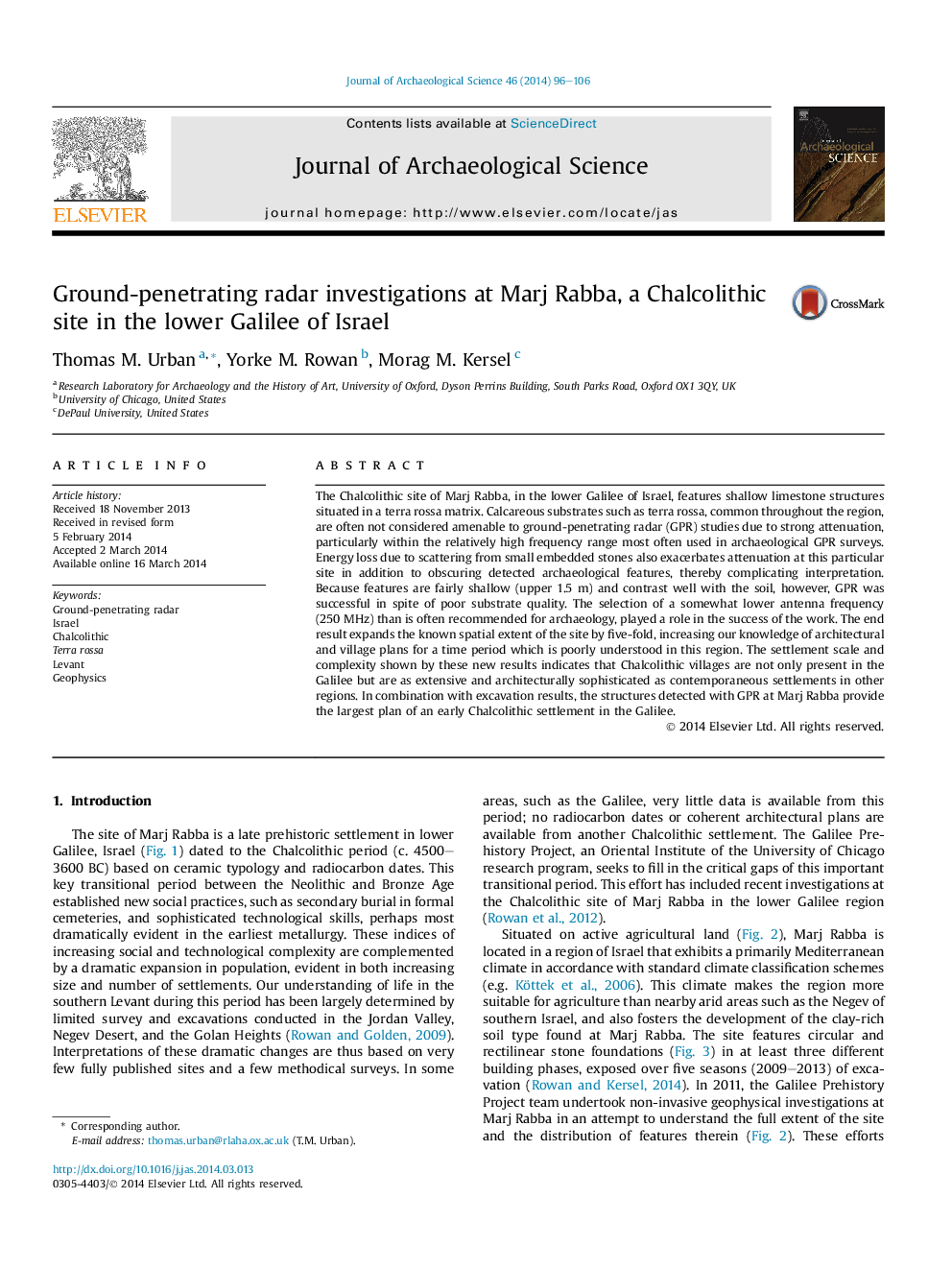| Article ID | Journal | Published Year | Pages | File Type |
|---|---|---|---|---|
| 7443360 | Journal of Archaeological Science | 2014 | 11 Pages |
Abstract
The Chalcolithic site of Marj Rabba, in the lower Galilee of Israel, features shallow limestone structures situated in a terra rossa matrix. Calcareous substrates such as terra rossa, common throughout the region, are often not considered amenable to ground-penetrating radar (GPR) studies due to strong attenuation, particularly within the relatively high frequency range most often used in archaeological GPR surveys. Energy loss due to scattering from small embedded stones also exacerbates attenuation at this particular site in addition to obscuring detected archaeological features, thereby complicating interpretation. Because features are fairly shallow (upper 1.5Â m) and contrast well with the soil, however, GPR was successful in spite of poor substrate quality. The selection of a somewhat lower antenna frequency (250Â MHz) than is often recommended for archaeology, played a role in the success of the work. The end result expands the known spatial extent of the site by five-fold, increasing our knowledge of architectural and village plans for a time period which is poorly understood in this region. The settlement scale and complexity shown by these new results indicates that Chalcolithic villages are not only present in the Galilee but are as extensive and architecturally sophisticated as contemporaneous settlements in other regions. In combination with excavation results, the structures detected with GPR at Marj Rabba provide the largest plan of an early Chalcolithic settlement in the Galilee.
Related Topics
Physical Sciences and Engineering
Materials Science
Materials Science (General)
Authors
Thomas M. Urban, Yorke M. Rowan, Morag M. Kersel,
